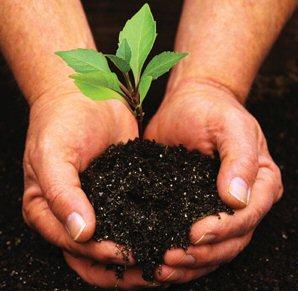
 Many people find the “basics of health habits” difficult. Things like 8-10 glasses of water, exercise, organic food, more sleep. Take care of those and the rest comes easier. Yet some people deny that they’re even “toxic” or think “it’s all in your head”.
Many people find the “basics of health habits” difficult. Things like 8-10 glasses of water, exercise, organic food, more sleep. Take care of those and the rest comes easier. Yet some people deny that they’re even “toxic” or think “it’s all in your head”.
I personally feel that doing the basics is a good way to prepare the body for a cleanse, a detox. We’re not yet in Springtime when fresher fruits and vegetables become more available, so keep working on the basics until we get there.
Some people need convincing of the need to detox. Well, we are ALL toxic! Few people are able to eat all organic food. We still love our snacks and sugar. Plus there are hidden and unknown sources of toxins. These ones, as well as the obvious ones, need to be enumerated and identified.
Toxins are poisons. They are all around us, causing us to become sick before our time, aging us, and causing illnesses to linger. Drugs are toxins. All of them have detrimental side effects, whether pharmaceutical drugs, over-the-counter drugs, or recreational drugs. Even the children who hear the drug ads on TV ask “why would anyone take that?” With side effects like ruptured spleen, fecal incontinence, and the quickly spoken word “death”, one does have to wonder.
The drug may cause death! Over 250,000 people per year in the United States alone die from prescription and non-prescription drugs. Over 15,000 of these deaths occur with over-the-counter drugs that are taken as directed! Is this a bit worrisome, I ask you. Well, it is to me. We are not all alike. Most testing of pharmaceutical and over-the-counter drugs is done on 200 lb men. That’s not the same as a 100 lb woman. Americans take more drugs that any other nation on Earth, yet we are sicker than the people of most other nations. While we want life-saving medicines for emergencies and traumas, we might be missing some of the ways that toxins get into us.
There are toxins, poisons, in cleaning products, cosmetics, carpeting, paints, city water, grocery store receipts, the air, the ground, food, well the list just goes on! Some of you reading this remember home milk delivery. Ever wonder why it passed out of favor? After all, what could be more convenient? In those days, milk was not homogenized or pasteurized. The cream rose to the top of the milk bottle and the enzymes were still fully functioning, making digestion easier. But those live enzymes caused the milk to spoil within a few days. In order to sell more milk by keeping it on grocers’ shelves longer, it was homogenized and pasteurized. More profit. But not for you or me or the milkman.
Virtually all human breast milk is contaminated. An independent study found that almost 100% of the women tested had residues of jet fuel in their breast milk. Now how could that be? Jet fuel residues were also found deep in the ice of Arctic regions. Every airplane flying overhead leaves a chemical trail. Sometimes you see them, sometimes you don’t. But these chemicals fall to Earth, landing on fields, houses, children playing outside. They affect our air and our water supply. While breast milk is still the food of choice for infants for other reasons, we need to know that we are all subject to this chemical onslaught.
Eating an apple a day is still good for you, if it’s organic, for its fiber content, vitamins and pectin. But in order to get the same amount of nutrients today that you would get from an apple 50 or 50 years ago, you would have to eat 5 or 6 apples a day to get the same benefit! Not all fruits and vegetables are genetically modified, but do you know which are and which aren’t? They aren’t labelled. And most packaged food contains genetically modified ingredients. Why? Because it’s cheaper to produce and the manufacturer makes more money.
I love shopping at farmers’ markets where you sometimes get to talk to those who do the actual growing. But do you actually get to go to the farm where the produce is grown? Is it a farm that has been in production for years which still may have residues of DDT in the soil? Has the soil been tested for residues? Are the seeds being grown organic, open pollinated, heirloom? Are amonium nitrate fertilizers being used or organically based fertilizers. No insecticides and no fungicides make the farm sustainable but what about things like fertilizers? If the farm is not certified organic, and you haven’t looked around at the growing operation, how do you know what you’re getting?
There are lots of toxins in our environment and thousands more added to our lives every year. Why are we putting up with this? So that large corporate entities can make more money and the risk of our health and our lives? So the big question becomes, what can you do to get some of these toxins out of your body? Next month, some suggestions.
No Comments
Leave a comment Cancel